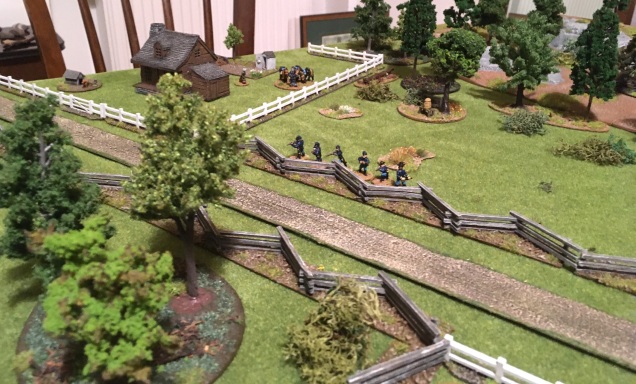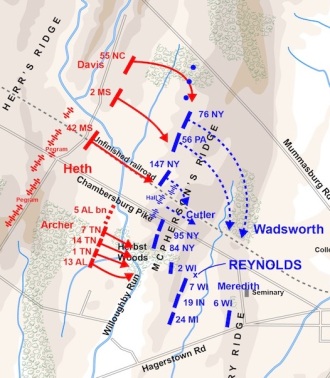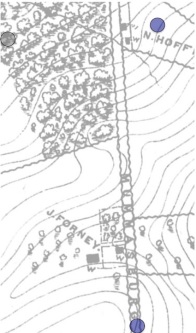Last week, I had Sigur over for a last game before Christmas. We played Sharp Practice, using my Fighting at the Forney Farm scenario. Sigur played the Union, while I took command of the Confederates.

In this scenario, key for the Confederate player is to push through to the Union Primary Deployment Point while keeping the Union forces coming from the Hoffman house behind the Confederate position in check. With the firepower of breech-loading carbines, it’s a very bad idea to get caught in the back!
I started by deploying a line of three regular groups at the Eastern fence, reading to march towards their objective. At the same time, I deployed some skirmishers at the Northern fence to keep an eye on the Union pickets.

Sigur deployed a dismounted group near the Hoffman house to harass my skirmishers.

Of more concern to me were the two mounted groups he deployed at his primary Deployment Point. Those guys rushed towards the orchard near the Forney farm, dismounted and took position just outside my line of sight.
I wanted to lure Sigur into deploying more units at the Hoffman house, as I hoped that would make it easier to reach my objective, so I detached a group form my line and had it take up position at the Northern fence. The ball opened with Sigur’s pickets shooting at my skirmishers, which took quite a beating and had to retreat.

I also deployed my other line and had it march in direction of the Hoffman house. In answer, Sigur deployed the rest of his units there. I got what I wanted – now it was a matter of speed and decisiveness. So my Eastern line stepped off, climbed over the fence and marched towards the Forney farm and the waiting carbines of the Union troopers.

Meanwhile, the Confederate pickets took my poor bloody infantry under fire. A lucky shot hit and instantly killed my Force commander! That was bad news, as my line facing the Hoffman house was under considerable pressure and unable to do much.

However, my other line was making good progress. As it approached the orchard, to my surprise Sigur decided to pull his troopers back.


He later said he was afraid of the line’s volley fire, which is ironic because I was quite afraid of the firepower of his carbines. Anyway, the troopers rushed behind the farm house, but my line smartly wheeled and poured a withering volley into the skedaddling bluebellies.

This was a heavy blow – one group broke immediately and the other was badly shaken. This more or less sealed my victory. My line advanced without impunity and detached a group to rush the Union deployment point. A Confederate victory!

This was one of the best games of Sharp Practice I’ve played in a while. SP always gives good games, but I felt that this scenario worked especially well (if I may say so myself). It was quite balanced, which is difficult when one side has breech-loading carbines, and the game was close-fought – my Force Morale was at 4 when I reached the objective. With the two Union deployment points positioned on either flank of the Confederates it also poses an interesting tactical problem for both sides.
Sigur said that he made one big mistake, and that was to keep his troops at the Forney farm in cover and then pull them back. I’m pretty sure that, had he taken my line under fire, it would have been much more difficult to get to my objective. Perhaps we’ll have a refight one day…















 I’ve started watching the second season of
I’ve started watching the second season of  As you know,
As you know,  The ever inventive Joe McCullough has recently started an interesting new wargaming format. Under the title
The ever inventive Joe McCullough has recently started an interesting new wargaming format. Under the title  There is also news from
There is also news from